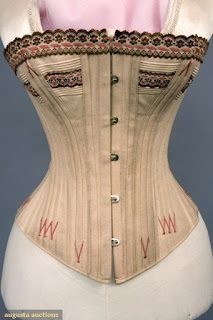
 Previous to the 1920s, women always wore their hair long. But soon after the war, a new trend of short hair began. Women adopted the "bob" hairstyle, which was short and simple. This drastic change was another reason the Harlem Renaissance was so famous. The new look of very short hair was a reflection of the "masculine look". Women also began wearing Cloche hats which allowed the women to hide their hair in it.
Previous to the 1920s, women always wore their hair long. But soon after the war, a new trend of short hair began. Women adopted the "bob" hairstyle, which was short and simple. This drastic change was another reason the Harlem Renaissance was so famous. The new look of very short hair was a reflection of the "masculine look". Women also began wearing Cloche hats which allowed the women to hide their hair in it. 









